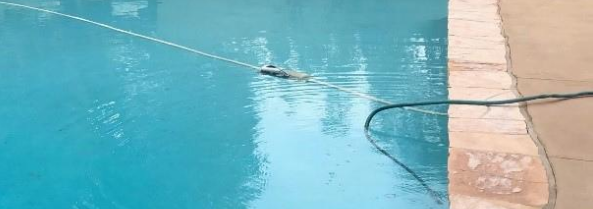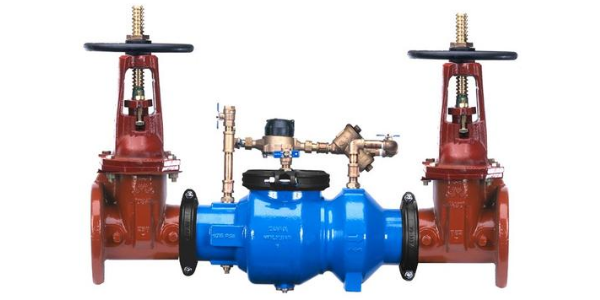A cross-connection is an actual or potential connection between the safe drinking water (potable) supply and a source of contamination or pollution. Cross-connections must be properly protected or eliminated.
Cross-Connection Control - Residential - California Water - Liberty
Liberty Cross-Connection Control Program
Liberty customers expect high quality water and reliable service. Liberty invests in the water system so we can continue delivering high quality potable water to our consumers. Our staff works diligently to protect the potable water from pollution or contamination, even when it’s flowing through the distribution system.
Backflow is the undesirable reversal of flow of water or mixtures of water and other liquids, gases, or other substances into the distribution pipes of the potable supply of water from any source or sources. When this happens the water system can become contaminated with pollutants that may be harmful to water users.
What Causes Backflow?
There are two conditions that contribute to backflow:
Any elevation of pressure in the downstream piping system (by pump, elevation of piping, steam pressure, air pressure, etc.) above the supply pressure at the point of consideration, which would cause or tend to cause a reversal of the normal direction of flow.
A form of backflow due to a reduction in system pressure, which causes a sub-atmospheric pressure to exist in the water system. When atmospheric pressure is greater than the potable water side, a reversal of flow can take place from the non-potable side.
There are many possible situations that can create backflow. The most important point is that without a properly functioning backflow prevention device, water can unexpectedly reverse in flow from a property or premise and draw with it any undesirable materials from the points of use into the drinking water system.

An example of cross-connection is a garden hose running while it is laying in a water source like a pool or other form of non-potable liquid. If the pressure drops in the distribution system, using a garden hose without backflow prevention can pollute or contaminate a water system from back-siphonage.
Backflow Prevention Devices
Anywhere there is a potential for contamination or pollution of the drinking water system, a backflow prevention device is required. Devices can be small and simple, such as an anti-siphon vacuum breaker (AVB) on a hose spigot, or large and complex, like a Double Check Detector Assembly (DCDA), which is an outgrowth of the double check valve and is primarily utilized in fire line installations.

Double Check Detector Assembly (DCDA)

Reduced Pressure Principal (RPP)
- Please note that installation of a backflow prevention assembly at the water meter protects the public water system from potential backflow, but it does not prevent backflow within your internal piping system. We recommend that you have all potential cross-connections on your property identified and addressed by a qualified professional to help protect the water on your own property.
- Backflow prevention devices used to protect the distribution system must be installed immediately after the water meter. These devices are owned and maintained by the customer or property owner.
- Installation of a backflow prevention device immediately after the water meter is often required on agricultural, landscape, commercial or industrial water services.
- This device only protects the water distribution system.
- This device is installed above ground and has the necessary test connections to determine if each part of the device is operating correctly.
- Test cocks on a backflow prevention device are only to be used by Certified Testers for testing the device. Connections to the test cocks or any other part of the device defeat the purpose of the backflow prevention device, and could damage it.
There are other types of devices to help protect the water distribution system or on-site potable system. The type of device to be installed is determined based on water use and backflow potential. Types of backflow prevention devices are listed below:
- Air Gap
- Reduced Pressure Principal (RPP) Assembly
- Hose Bib or Irrigation System Atmospheric Vacuum Breaker (AVB)
- Double Check (DC)
- Dual Check
- Pressure Vacuum Breaker (PVB)
- Spill-Resistant Vacuum Breaker (SVB)
Backflow Prevention Program
Federal and state law requires water suppliers to protect their water systems from contamination and pollution. Under the California Code of Regulations (CCR), all water purveyors must have a Cross-Connection Control Program.
As part of Liberty’s Cross-Connection Program, the cross-connections specialist routinely conducts surveys of new and existing facilities to determine which type of backflow prevention is necessary to help protect the water system.
Liberty works to help protect the distribution system from contamination and pollution from backflow. If backflow prevention is required at the water meter, these devices must be tested initially and annually to confirm they are operating correctly. In our service areas, tests and maintenance of backflow prevention devices must be conducted by County of Los Angeles Public Health certified testers or AWWA Certified Testers.
Certified testers are responsible for performing accurate tests, and repairing or replacing devices that fail. Additionally, testers must report all repairs and test results to Liberty. After the testing is complete, the tester should give a copy of the test report to the customer and send the original report to Liberty and upload the results to BSI.
If you are a certified tester please upload the results HERE.
Plumbers, landscapers and other contractors are required to follow the latest publication of the Uniform Plumbing Code (UPC) regarding backflow and cross-connection prevention. Customers should contact state licensed contractors for modifications to their plumbing.
The backflow prevention device test only takes a few minutes. The test assures that each part of the device is operating correctly. If the device fails the first test, the tester must investigate the reasons for the failure and, if necessary, repairs must be made. Often, cleaning will correct the problem. To maintain proper protection, devices that fail the initial test must be repaired and re-tested within 15 days.
Customers that receive annual notices for testing and have questions regarding backflow should call Liberty at 1-800-727-5987 and ask for the cross-connections specialist or e-mail backflowdowney@libertyutilities.com.
Website Definitions
Any elevation of pressure in the downstream piping system (by pump, elevation of piping, steam pressure, air pressure, etc.) above the supply pressure at the point of consideration, which would cause or tend to cause a reversal of the normal direction of flow.
A form of backflow due to a reduction in system pressure, which causes a sub-atmospheric pressure to exist in the water system. When atmospheric pressure is greater than the potable water side, a reversal of flow can take place from the non-potable side.
An impairment of the quality of the water which creates an actual hazard to public health through poisoning or through the spread of disease by sewage, industrial fluids, waste, etc.
The water system begins with the source of water such as groundwater or surface water. Wells, pumps and treatment facilities are part of the water system which delivers water to the distribution system. The water distribution system consists of tanks and pipes which store and deliver treated water to customers.
Pollution is an impairment to the quality of the water to a degree which does not create a hazard to the public health but which does adversely and unreasonably affect aesthetic qualities.
Potable (POE-tuh-bull) water is water that does not contain objectionable pollution, contamination, minerals, or infective agents and is considered satisfactory for drinking and other domestic purposes.
